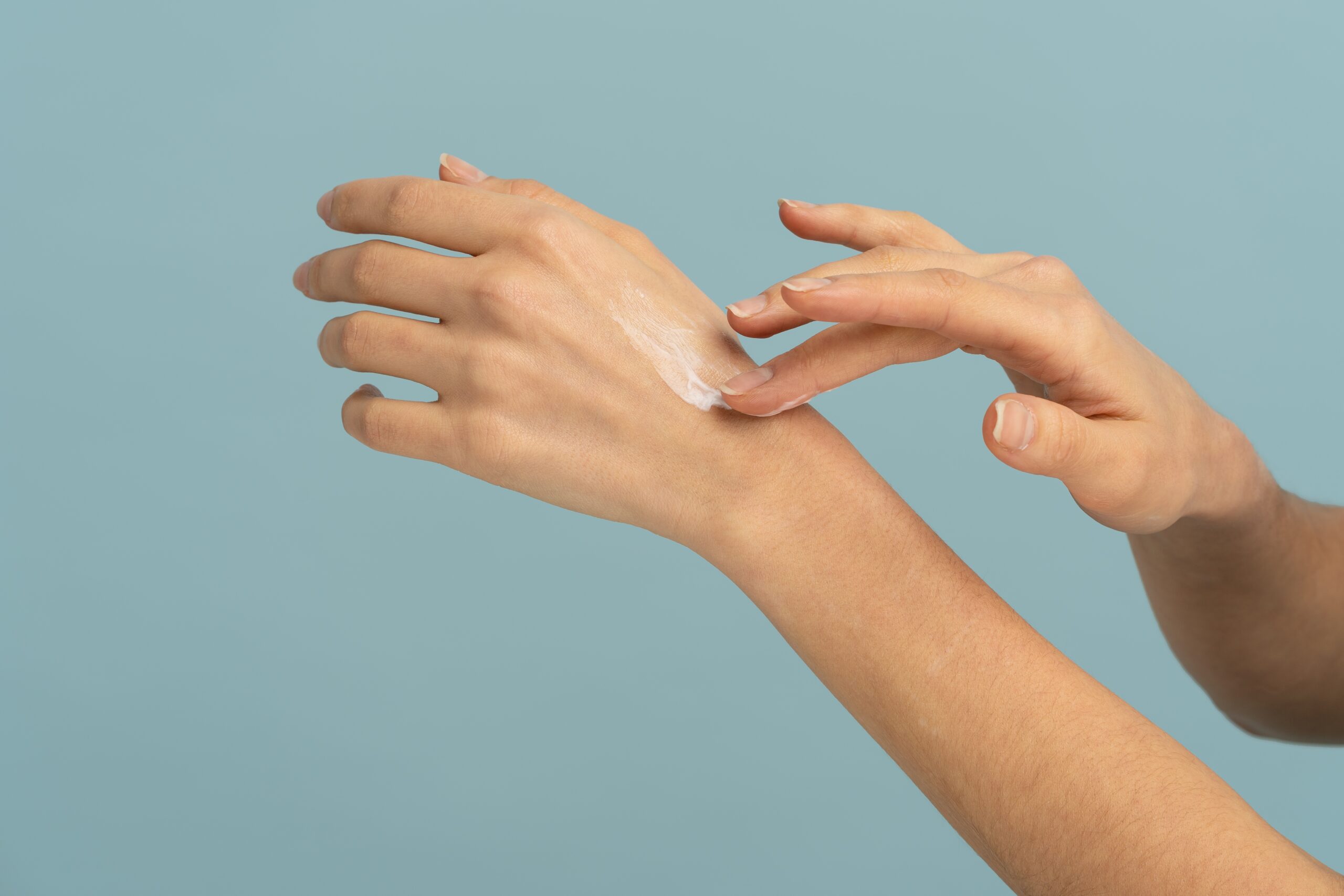The Best Treatment Options For Dry Scaly Skin
What are the best treatment options for dry scaly skin? Let’s take a look. First and foremost dry, scaly skin is a common and troublesome problem for many people. The dry, flaky patches on the skin can be due to a lack of moisture in the air or other causes. Several treatments are available to help improve the condition, including moisturizers, creams, lotions, and gels.
It can also be due to an allergic reaction, lack of hydration, or exposure to hot or cold temperatures. If you’re suffering from dry, scaly skin, you should try different treatments until you find one that works for your situation.

Coconut Oil
Coconut oil effectively treats dry, scaly, and keratotic conditions. It helps to heal bacterial infections and fungal infections.
To use coconut oil for your skin condition, apply it to your face twice a day before bed. For best results, try using coconut oil daily for four weeks before deciding.
According to the American Academy of Dermatology, it is effective in hydration, soothing, softening, and healing skin. Coconut oil can also be used or mixed with other ingredients for products such as shampoo and lotion.
Coconut oil contains saturated fatty acids that are great for the body’s natural moisturizing abilities. If you’re looking to try a new way to moisturize your skin or want to give it a boost, use coconut oil!
Petroleum Jelly
Petroleum jelly is an excellent option for those looking for gentle treatment. You can use it on your face and body or soothe dry, itchy skin.
Petroleum jelly effectively treats eczema and psoriasis because it works as an emollient.
It means that petroleum jelly will soften the skin and make it more comfortable. The best part is that this non-greasy product doesn’t clog pores, which gives an almost no-makeup look!
It is a thick, white, emollient ointment made from petroleum, mineral oil, and water. The most common use of petroleum jelly prevents chafing and irritation after shaving or waxing.
Petroleum jelly also prevents air and moisture from escaping the body. It can help restore the protective barrier on dry skin broken down by heat, cold, and other environmental factors.
Oatmeal Baths
Try an oatmeal bath if you’re looking for an easy solution to dry and scaly skin. It can be beneficial for people with eczema.
Oatmeal is soothing to the skin, and it absorbs oils and moisture quickly. It won’t dry out your skin as many other soap products would. Add in some essential oils like lavender or chamomile to make this treatment even more effective.
The oatmeal will help provide moisture to your skin and act as an exfoliant. You can use oatmeal ground or in the form of a bar, but It is easier to make an oatmeal bath by combining two oats with six cups of water and heating it on the stove until most of the water has evaporated.
Leave this mixture in the refrigerator overnight before using it the next day. While in the bath, remember not to scrub too hard because you’ll damage your skin. After your soak, pat yourself dry and apply moisturizer.
Antioxidants and Omega-3s
There are many ways to alleviate skin problems, but using antioxidants and Omega-3s is one of the top treatments for this problem.
It’s good to use this treatment when your skin is sun-damaged because it helps stop further damage. Additionally, antioxidants such as vitamin C can reduce the appearance of wrinkles by boosting collagen production.
Antioxidants can help the body fight off free radicals and prevent inflammation. They can also help prevent further damage to the skin cells and slow down aging. Omega-3s are essential fatty acids that can help with skin elasticity and hydration.
Shower Temperature
If you have dry skin, or if your skin is itchy and irritable, you know that it can cause many problems. The best treatment for this is to shower with warm water.
It’s crucial to keep your water temperature below 104 degrees Fahrenheit because it can dehydrate your skin even more if it gets too hot.
The water temperature is critical in determining how well your skin will feel after taking a shower. Showering at temperatures too hot or too cold can damage and dry out the skin, leaving it flaky and rough.
Humidifier
When your skin starts dry in the winter, you need to add moisture by using a humidifier. There are different ways to do this: the most common are using a cool-mist humidifier or vaporizer that delivers water droplets instead of an ultrasonic humidifier that releases steam into the air.
The amount of water in the air, humidity levels, and even certain chemicals in the bathroom can affect how your skin looks. Skincare experts recommend using a humidifier to provide moisture for dry skin and prevent dry, itchy patches from forming.
It will also help with allergies, especially during the winter months when the indoor and outdoor temperatures fluctuate often. To prevent dry skin from becoming more severe, one should consider adding a humidifier to their room to regulate the moisture level in the air.
Avoid Allergens
Another way to manage these flaky issues is by avoiding allergens such as dust and pollen. It’s also important to avoid using harsh soaps and cleansers. Instead, use a gentle moisturizer every morning and night.
It can occur from dry skin or environmental allergies. Some of the best treatments for dry scaliness are moisturizers and hydration serums. Many people also use vitamin C and glycolic acid in their treatments.
The best way to prevent this problem is to avoid triggers that cause your skin to lose moisture. Some people also find that changing their diet can help dry, flaky skin.
Final Thoughts On The Best Treatment Options For Dry Scaly Skin
The best treatment options for dry, scaly skin are the topical treatments listed above. They provide relief, but they also help correct dry and scaly skin symptoms.
These treatments can slow down or even stop the progression of dry skin that can lead to further problems such as cracked, sore, or bleeding skin.

